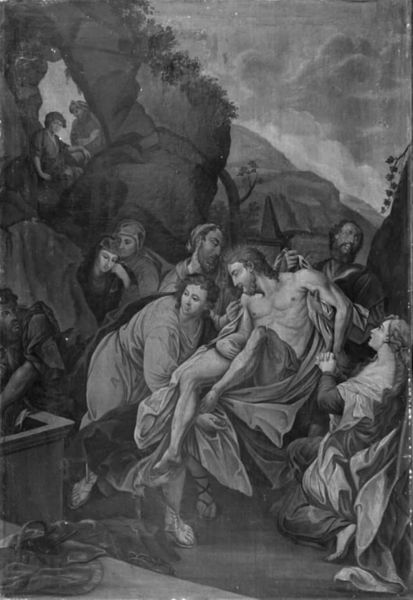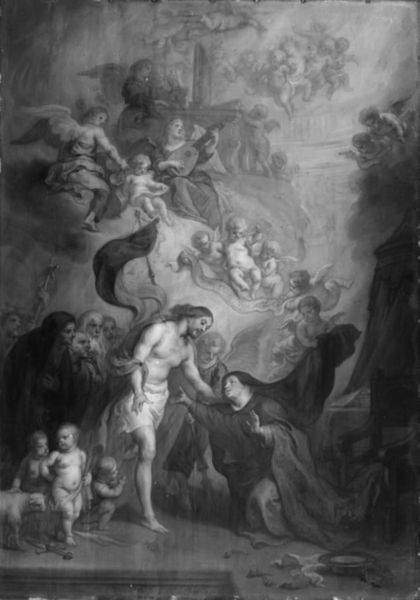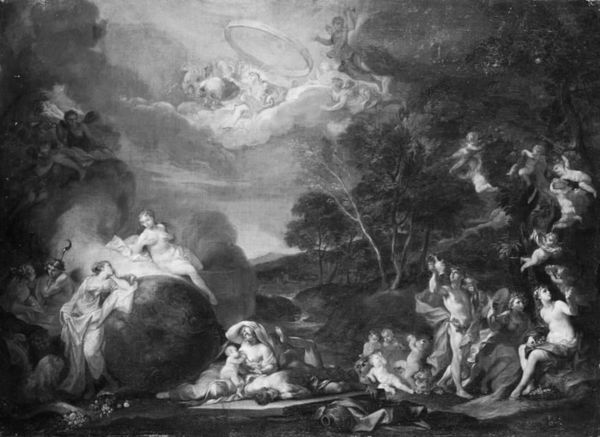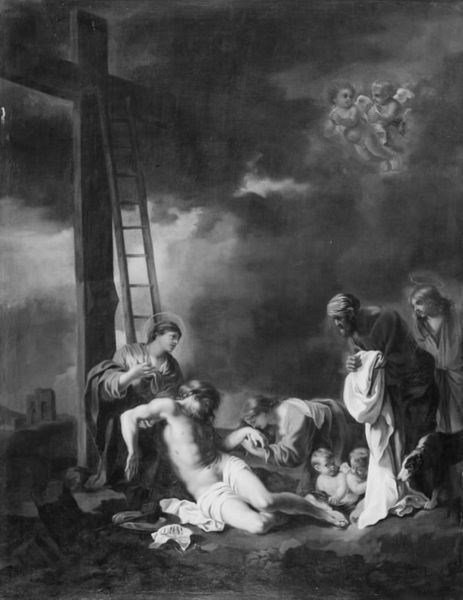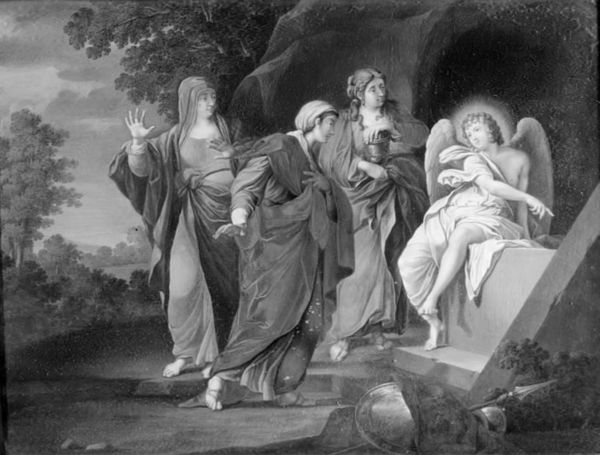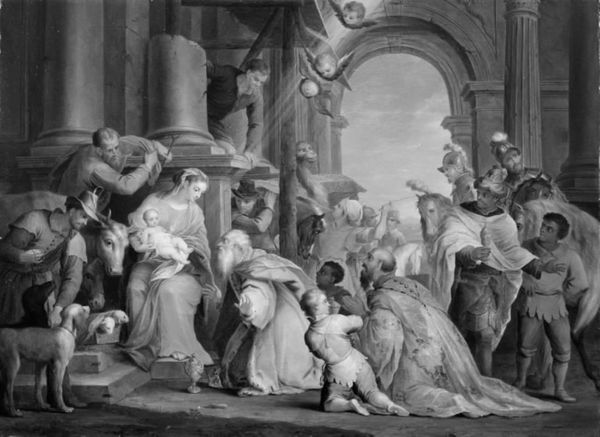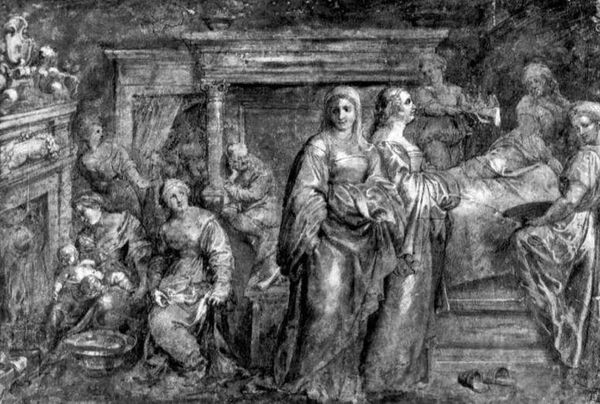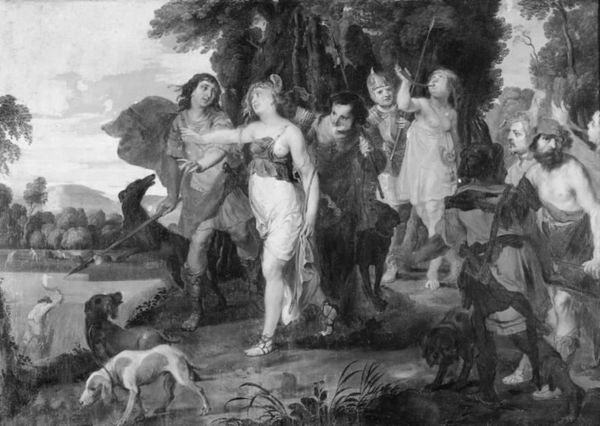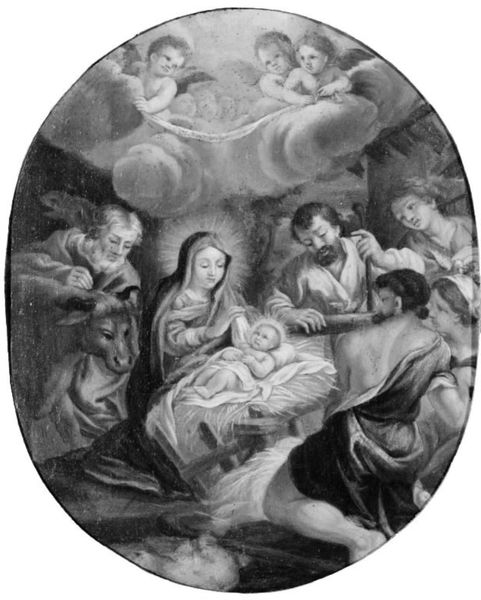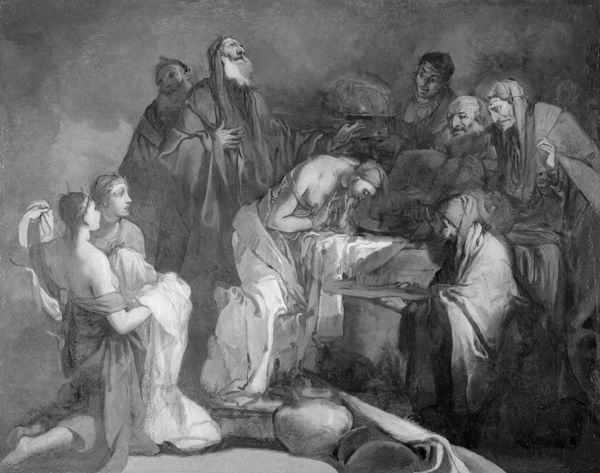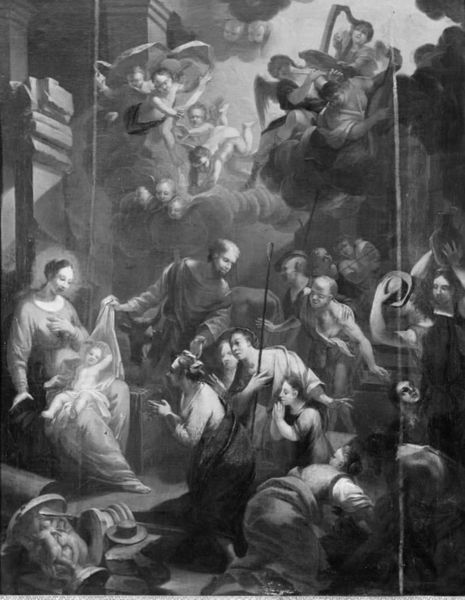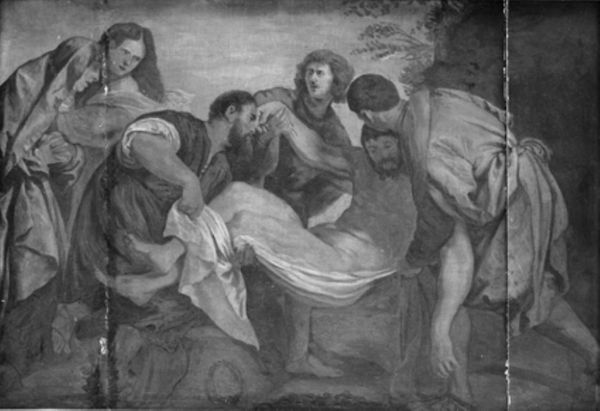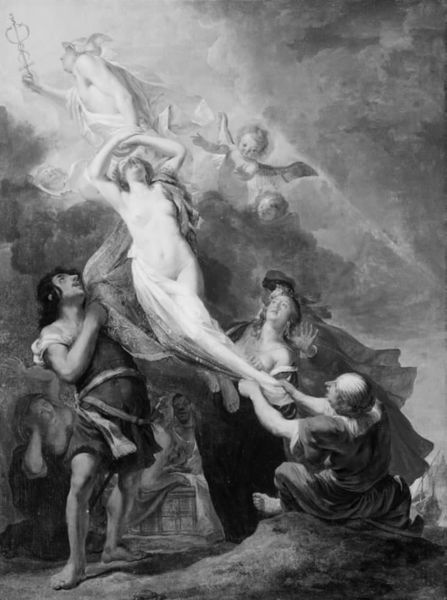
tempera, painting
#
portrait
#
allegory
#
baroque
#
tempera
#
painting
#
figuration
#
chiaroscuro
#
surrealism
#
genre-painting
#
history-painting
#
monochrome
Dimensions: 64.5 cm (height) x 49.5 cm (width) (Netto)
Curator: There’s a certain dreamlike quality to this artwork, almost unsettling. Is it “The Holy Family with Saints”? Editor: Yes, that's correct. It's currently held here at the SMK, and we believe it’s from the late 16th to early 17th century. Attributed to Hans Rottenhammer, if I remember rightly, who was known for this kind of intricate figuration and idealized Baroque style. What catches your eye, initially? Curator: Well, it's this blend of the domestic and the divine. You've got the shepherds arriving, their bodies rooted in the earth and the here-and-now. Yet, swirling above, an almost excessive number of angels dominate the ethereal realm. Editor: Absolutely. Rottenhammer masterfully uses chiaroscuro, that dramatic contrast of light and dark, to highlight the key figures – Mary and the infant Jesus – drawing our eyes to the center. The way the artist positions figures and illuminates some faces while leaving others almost invisible contributes to the image's cultural memory of baroque ideals and also how such art solidified Catholicism against reformation movements during that era. Curator: The halos here feel almost subdued. Look at Saint Joseph, half in shadow, humbly positioned near Mary but seemingly unseen, fading from our focus as a signifier within this powerful narrative. What does that reveal about Baroque expectations of family, saints, and society? The cultural weight of such images must have been tremendous at the time. Editor: Undeniably, images like this reaffirmed established social hierarchies, especially within the religious framework. And note, too, how the light itself almost becomes symbolic, bathing the Virgin and Child in grace, but leaving secondary figures in more earthly tones. This placement subtly suggests the order of piety and divine preference within the historical socio-political structures of religious expression during that time. Curator: A painting like this really reveals the social narratives of the 17th century. It gives a window into not only the historical views on society but also provides cultural context as the painting reflects beliefs of that period through the characters presented. The sheer artistry involved, though—layering the narrative to showcase all figures great and small! Editor: The technique definitely speaks to a cultural desire to showcase virtue and authority; looking closely provides some valuable social awareness of an antiquated worldview for viewers, and, hopefully, reminds us of our need for modern change. Thank you.
Comments
No comments
Be the first to comment and join the conversation on the ultimate creative platform.
